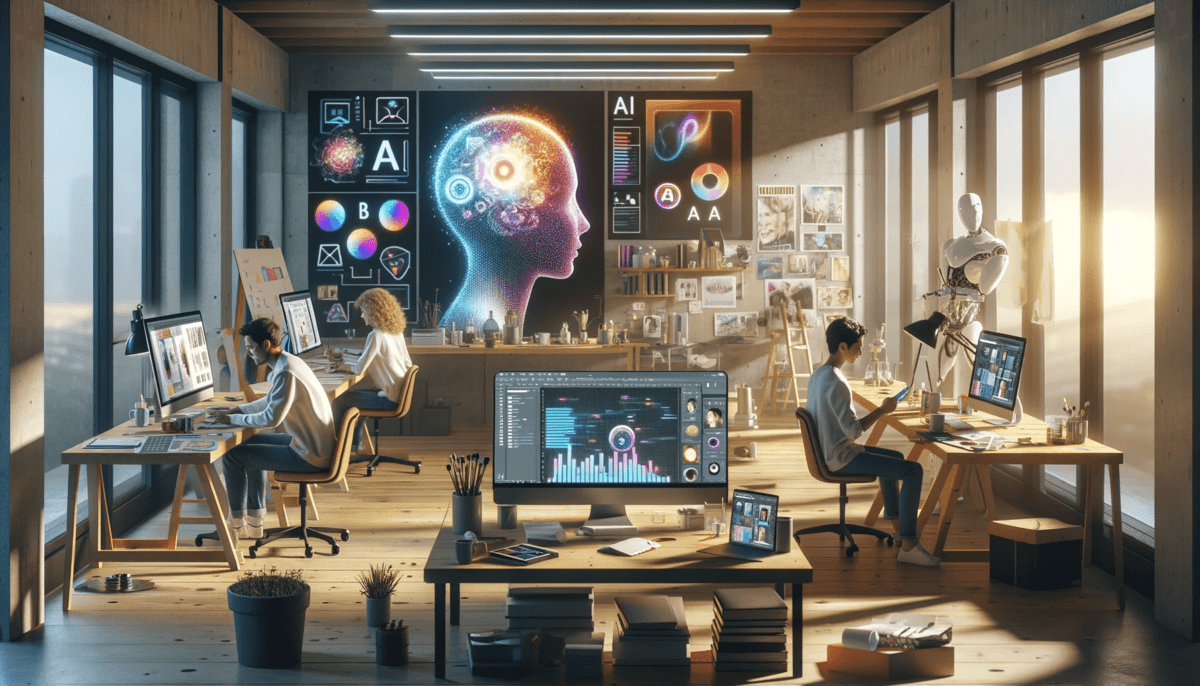What is Generative AI?
Generative Artificial Intelligence (Generative AI) represents a subcategory of Artificial Intelligence (AI) that focuses on creating something new. This technology leverages deep neural networks to generate data that did not exist before, such as images, sounds, texts, and other forms of original content.
Generative AI learns from input data, creates new information based on what it has learned, and ultimately produces unique outputs.
Definition of Human Creativity
Human creativity is a unique and complex process that allows us to generate new ideas, solve problems, and create art. It is a process intrinsically linked to our ability to think critically, imagine, and dream.
Creative ideas can be spontaneous or the result of a long process of reflection and experimentation.
They are often innovative, original, and can lead to unique solutions to complex problems. In any case, human creativity is fundamental to our development and progress as a species.
The Role of AI in Enhancing Human Creativity
Creativity, once thought to be exclusive to humans, is now a capability that AI can mimic.
This does not mean that AI will replace human creativity, but rather that it can be used as a tool to enhance our ability to generate innovative ideas.
Generative AI can help humans solve complex problems in ways we could not have imagined. For example, it can generate innovative solutions for engineering problems, design new products, or create new forms of art.
Looking to the future, Generative AI could have an even greater impact on human creativity. It could allow us to explore ideas and concepts that would otherwise have remained unexplored, thus expanding the boundaries of our creativity.
However, it is important to maintain a balance between the use of AI and human creativity.
We should use AI to enhance our creativity, not to replace it.
Generative AI has the potential to revolutionize our understanding of human creativity, but to make the most of this technology, we must learn to work in tandem with it, rather than seeing it as a threat to human creativity.
Generative AI as a Tool to Inspire New Ideas
A striking example is the use of Generative AI in the music industry.
Artists and producers are beginning to use these technologies to create melodies, rhythms, and even entire musical tracks. These creations are not only unique, but they often go beyond the normal range of human thought, pushing the limits of what we consider possible in the field of music.
But music is just the tip of the iceberg. Generative AI is also used in sectors such as art, design, and writing, where it can generate everything from artworks to design layouts and pieces of writing. This opens up new possibilities for human creativity, allowing us to explore ideas and concepts that might otherwise be beyond our reach.
Generative AI in Solving Complex Problems
Generative Artificial Intelligence (AI) has shown enormous potential in solving complex problems. This is because, unlike humans, AI can analyze enormous amounts of data in very short times, identifying patterns and correlations that even the most experienced professionals might overlook.
Through machine learning, AI can create new models or strategies to address specific problems, providing innovative and unconventional solutions. This process can lead to revolutionary discoveries and inventions, such as new drugs or surgical techniques, new materials or energy sources, new technologies, or production methods.
Furthermore, Generative AI can be used to simulate complex scenarios, such as the consequences of climate change or the impact of an economic crisis. These simulations can help policymakers make more informed decisions and anticipate potential problems.
Future Developments Expected for Generative AI
We do not have to look far to see the future developments of Generative AI. With the acceleration of technology, we can expect AI to become increasingly sophisticated and versatile. Imagine software that can create unique artworks from your sketches, or an algorithm that can generate new melodies from your favorite songs.
Generative AI could also be used to develop new ideas for products or services, or to find innovative solutions to complex problems. These are just some of the possibilities that Generative AI could offer in the near future.
How Generative AI Could Change Human Creativity in the Future
In the future, Generative AI could have a significant impact on human creativity. For example, it could help overcome creative blocks by suggesting new and innovative ideas based on vast amounts of data. It could also assist in the creation of artworks, music, and design, expanding the creative possibilities available to artists.
Generative AI could also change the way we solve problems by proposing innovative solutions to complex problems, based on a wide range of data and advanced algorithms.
It could also help identify new opportunities and predict future trends, facilitating planning and decision-making.
However, it is important to emphasize that Generative AI should not replace human creativity, but rather enhance it.
We should seek to use AI as a tool to expand our creative capabilities, rather than as a substitute for human creativity. In this way, we can make the most of the advantages of AI without losing sight of the importance of human imagination, intuition, and experience.
In conclusion, Generative AI is an exciting frontier that amplifies and enriches human creativity.
We at Colibryx are a software house with a team of experts ready to guide you in exploring this innovative landscape. If you wish to harness the potential of AI for your creative projects, contact us!
We will be your reliable partner on this revolutionary journey.
